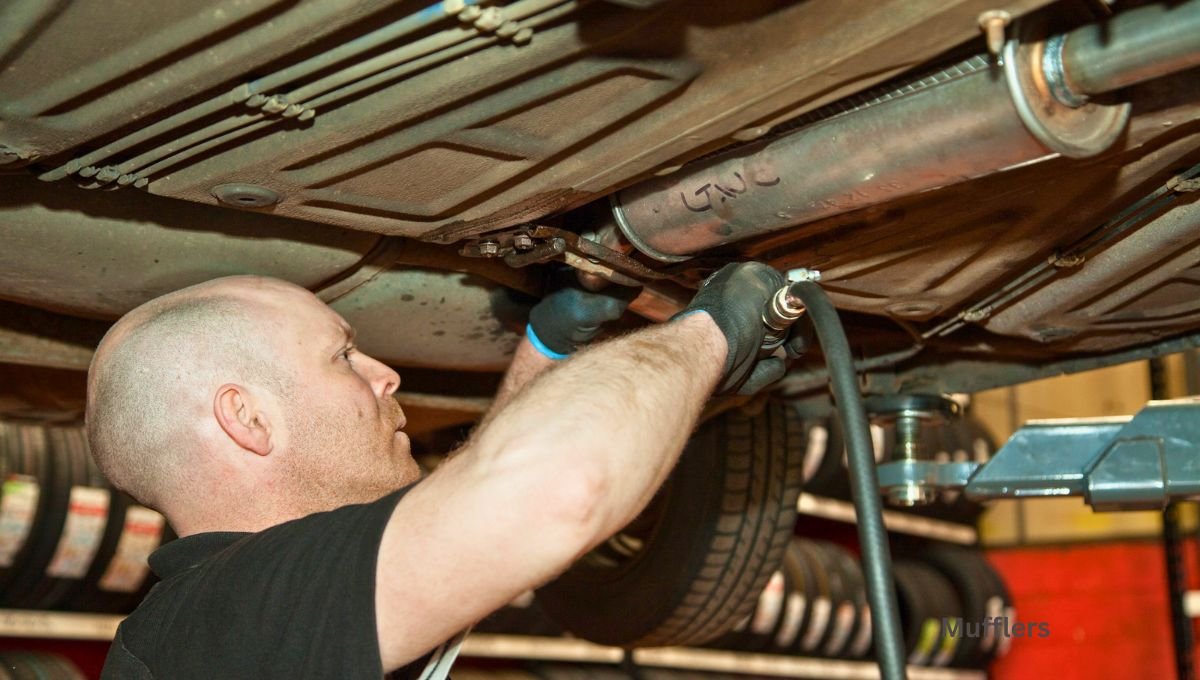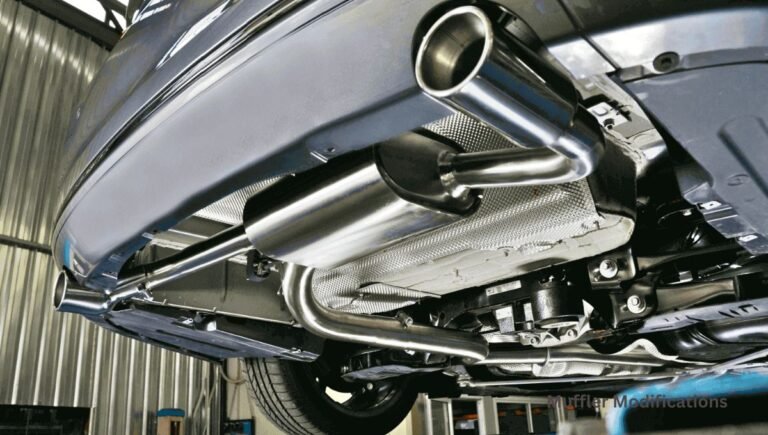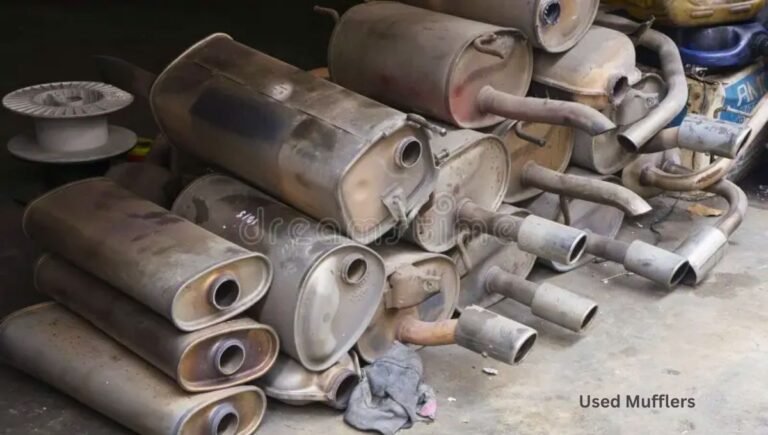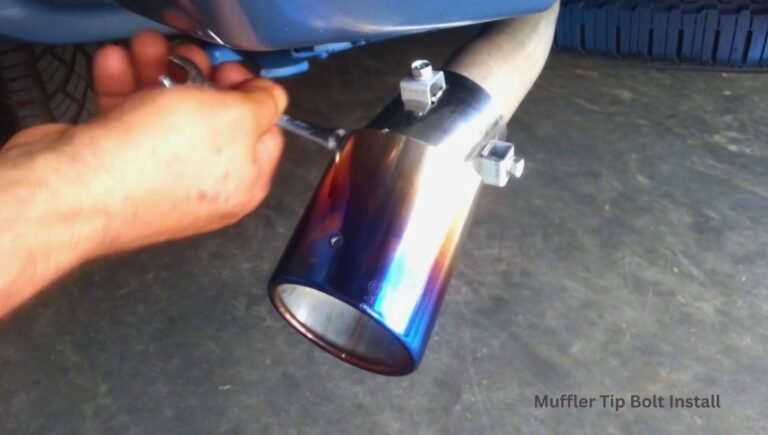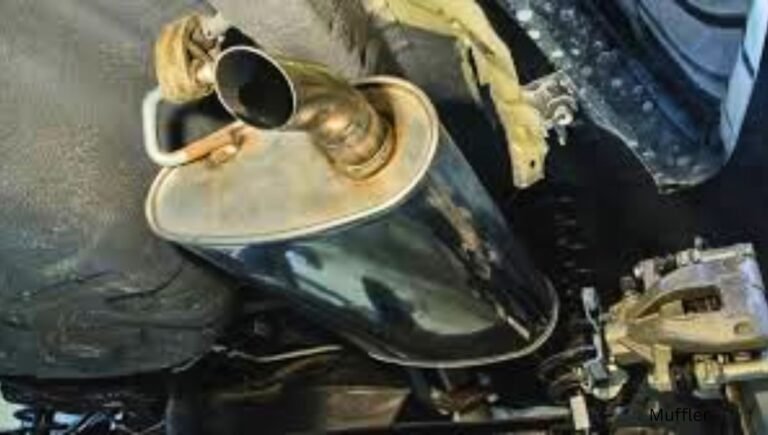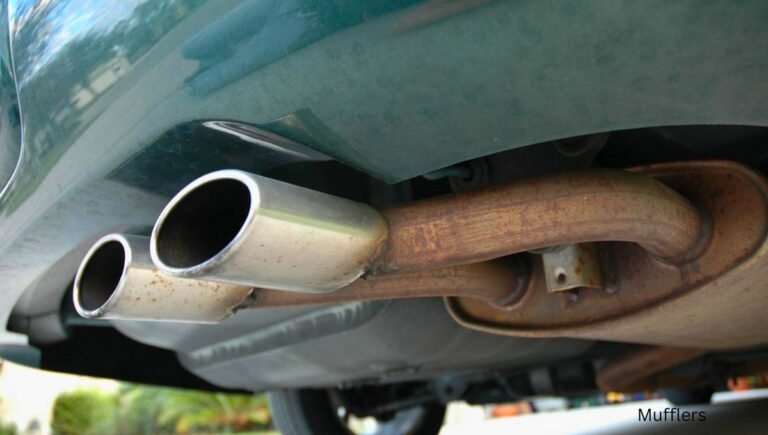Can You Put Muffler Back on After Delete? Quick Reversal Tips
Yes, you can put muffler back a muffler after delete. This process involves securing the muffler properly.
Thinking of enhancing your vehicle’s performance by deleting the muffler? While muffler deletion can boost horsepower and sound, it may not be legal in all states. Before proceeding, check local regulations regarding exhaust modifications.
If you choose to reinstall the muffler later, ensure it is properly secured to avoid any issues with performance or noise levels.
Let’s delve deeper into the process of removing and reattaching a muffler to your vehicle.
Introduction To Muffler Deletes
Muffler deletes have become a popular modification for car enthusiasts looking to enhance the sound and performance of their vehicles. In this section, we will explore the appeal of a muffler delete, as well as the potential legal and environmental implications associated with this modification.
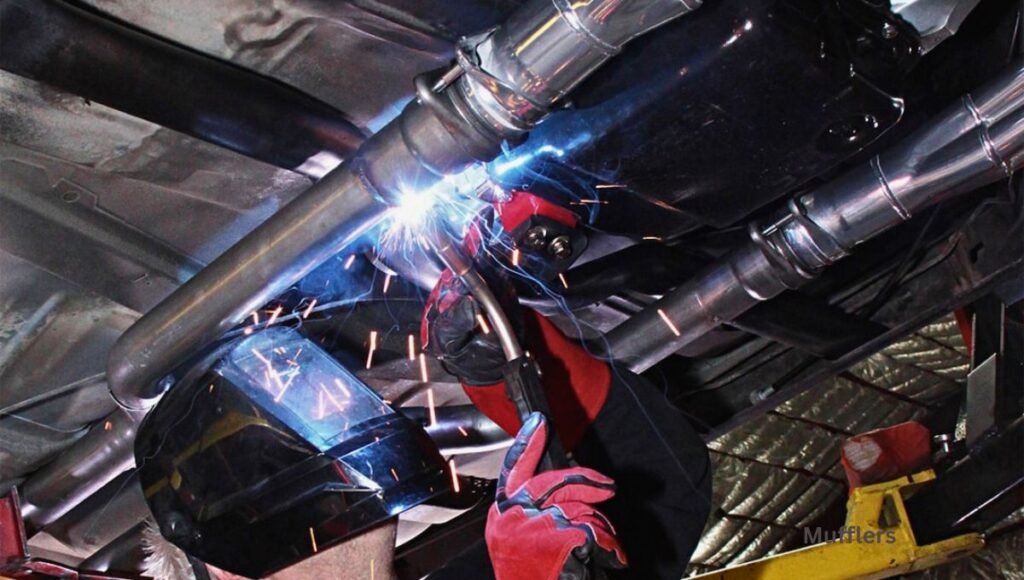
The Appeal Of A Muffler Delete
Enhanced sound: A muffler delete can result in a deeper and more aggressive exhaust note, which is particularly appealing to those seeking a more distinctive sound from their vehicle.
Improved performance: By reducing exhaust back pressure, a muffler delete may lead to a slight improvement in horsepower and torque, providing a more responsive driving experience.
Potential Legal And Environmental Implications
Legal considerations: It’s important to be aware of local regulations regarding exhaust modifications, as some jurisdictions may have restrictions on the level of noise and emissions produced by a vehicle.
Environmental impact: Removing the muffler can increase the emission of harmful pollutants, contributing to air pollution and potentially impacting the environment.
Understanding Muffler Functionality
Understanding muffler functionality is crucial when considering whether you can put the muffler back on after a delete. Discovering the impact of muffler removal and its effects on performance and sound can help make an informed decision.
Noise Reduction Role
Mufflers are designed to reduce engine noise, which is produced during the combustion process. The noise reduction function of mufflers is critical in ensuring that the vehicle doesn’t produce excessive noise, which could be a nuisance to other road users.
The muffler does this by using sound-absorbing materials, which reduce the sound waves produced by the engine. When the muffler is removed during a delete, the noise level of the vehicle increases significantly, which could result in a violation of local noise regulations.
Emissions Control Importance
Mufflers also play a crucial role in controlling the emissions produced by the vehicle. Modern mufflers are equipped with catalytic converters, which help to reduce the amount of harmful pollutants released into the environment.
These pollutants include carbon monoxide, hydrocarbons, and nitrogen oxides. When the muffler is removed during a delete, the vehicle’s emissions will increase significantly, which could result in a violation of local emissions regulations.
In conclusion, understanding muffler functionality is critical when considering a muffler delete. Removing the muffler will result in increased noise levels and emissions, which could lead to a violation of local regulations. It is essential to consider the impact of muffler delete on the environment, as well as other road users.
Before The Delete
Before undertaking a muffler delete, it’s crucial to consider the implications and potential consequences of this modification. From assessing the need for a muffler delete to understanding the impact on local regulations, there are several key factors to address before proceeding with this automotive alteration.
Assessing The Need And Impact
When contemplating a muffler delete, it’s essential to first evaluate the necessity and potential impact of such a modification. Assessing the need involves understanding the reason behind considering a muffler delete.
This could range from seeking a more aggressive exhaust note to desiring improved engine performance. It’s important to weigh these benefits against the potential drawbacks, such as increased noise levels and the possibility of reduced backpressure affecting engine performance.
Consulting Local Regulations
Consulting local regulations is an imperative step before proceeding with a muffler delete. The legality of modifying the exhaust system varies by jurisdiction, with some regions strictly prohibiting alterations that result in increased noise levels.
Understanding and adhering to these regulations is essential to avoid potential fines or legal consequences. Additionally, ensuring compliance with emissions standards is crucial to prevent any violations related to pollution control requirements.
The Muffler Delete Process
The muffler delete process allows you to remove the muffler from your vehicle’s exhaust system. However, it is possible to put the muffler back on after the delete if desired. This gives you the flexibility to modify your vehicle’s sound and performance while still having the option to revert to the original setup.

Tools Required
To perform a muffler delete, you will need the following tools:
- Ratchet set
- Socket set
- Wrenches
- Jack and jack stands
- Penetrating oil
- Protective gloves and eyewear
Step-by-step Guide
Follow these steps to complete the muffler delete process:
- Ensure safety: Park your vehicle on a flat surface and engage the parking brake. Put on protective gloves and eyewear.
- Raise the vehicle: Use a jack to lift the rear end of your vehicle. Secure it with jack stands for added safety.
- Locate the muffler: Identify the location of the muffler underneath your vehicle. It is typically found towards the rear.
- Remove the exhaust hangers: Use a ratchet or socket set to loosen and remove the exhaust hangers that connect the muffler to the vehicle’s frame.
- Unbolt the muffler: Locate the bolts or clamps that secure the muffler to the exhaust system. Use a wrench or socket set to loosen and remove them.
- Slide out the muffler: Once the bolts or clamps are removed, carefully slide the muffler out of its position. It may require some force or the use of penetrating oil if it’s stuck.
- Inspect and clean: Take a moment to inspect the exhaust system and clean any dirt or debris that may have accumulated.
- Reinstall the muffler (optional): If you plan to put the muffler back on after the delete, follow the steps in reverse order to reinstall it. Ensure all connections are secure.
- Lower the vehicle: Carefully remove the jack stands and lower the vehicle back to the ground.
Remember, removing the muffler will result in a louder exhaust sound. It is essential to check your local laws and regulations regarding noise levels before proceeding with a muffler delete. Additionally, consult with a professional mechanic if you are unsure about performing this modification on your own.
Reversing A Muffler Delete
Did you recently remove your muffler but now want to put it back on? Reversing a muffler delete is indeed possible, and in this article, we will guide you through the process. Whether you have decided to restore your vehicle’s original sound or want to comply with local regulations, reinstallation can be a straightforward task if you have the right tools and follow the correct steps.
Feasibility Of Reinstallation
Before diving into the process, it’s important to determine the feasibility of reinstalling your muffler after a delete. In most cases, reattaching a muffler is a viable option, unless significant modifications were made during the delete process. If any additional modifications were made to your exhaust system, such as cutting or altering pipes, you may need to consult a professional to ensure proper reinstallation.
Gathering The Right Tools And Parts
When it comes to reversing a muffler delete, having the right tools and parts is crucial. Here are the essential items you’ll need:
- New muffler: If your previous muffler is damaged or unsuitable for reinstallation, you will need to purchase a new one.
- Hangers and brackets: Check if your existing hangers and brackets are still in good condition. If not, consider replacing them to ensure a secure installation.
- Exhaust clamps: These clamps are necessary for connecting the muffler to the rest of the exhaust system. Make sure you have the correct size for your specific vehicle.
- Socket set and wrenches: These tools will be used to remove and reattach any bolts or nuts during the process.
- Jack stands and a hydraulic jack: These will assist you in safely raising your vehicle to access the exhaust system.
Once you have gathered all the necessary tools and parts, you can proceed with the reinstallation process. It’s important to follow the manufacturer’s instructions for your specific muffler and consult your vehicle’s manual for any additional guidance.
Reversing a muffler delete is a task that requires attention to detail and precision. By following the correct steps and using the right tools, you can successfully restore your muffler to its original position. However, if you are unsure about any aspect of the process, it is recommended to seek professional assistance to ensure a proper and safe reinstallation.
Step-by-step Reinstallation Guide
Learn how to put the muffler back on after a delete with our step-by-step reinstallation guide. This detailed tutorial will walk you through the process, ensuring that you can easily and effectively restore your muffler.
Preparation And Safety
Before reattaching the muffler, ensure the vehicle is parked on a level surface and the engine is cool. Wear protective gloves and eyewear.
Inspect the muffler and exhaust system for any damage or leaks. If any issues are found, address them before proceeding with the reinstallation.
Attaching The Muffler Back
Lift the muffler into position and align it with the exhaust pipes. Use new gaskets and bolts to secure the muffler in place.
Tighten the bolts to the manufacturer’s recommended torque specifications to ensure a secure and leak-free connection.
Double-check the alignment and clearance of the muffler to prevent any rattling or interference with other components.
Challenges And Solutions
When considering putting a muffler back on after a delete, there are various challenges that may arise. Below are some common issues encountered and troubleshooting tips to help you navigate this process smoothly:
Common Issues Encountered
- Mismatched parts causing fitment problems.
- Exhaust leaks due to improper installation.
- Reduced performance if not properly reinstalled.
Troubleshooting Tips
- Ensure all parts match the make and model of your vehicle.
- Check for any leaks after installation using soapy water.
- Re-tune the engine to optimize performance post-reinstallation.
Muffler Maintenance Post-reinstallation
After deleting the muffler, it is possible to put it back on with proper maintenance. The muffler needs to be thoroughly cleaned and inspected before reinstallation to ensure proper function and prevent damage. Regular maintenance of the muffler can also prevent future issues.
- Inspect for leaks or loose connections.
- Check for any signs of corrosion or damage.
- Ensure the muffler is securely attached.
- Clean the muffler regularly to prevent buildup.
- Apply rust-resistant coating for durability.
- Monitor exhaust system for optimal performance.
Consequences Of A Muffler Re-attach
Reattaching a muffler after a delete can have consequences that impact both the performance of your vehicle and its legal compliance.
Performance Implications
Reattaching a muffler post-delete may reduce airflow and hinder exhaust gases’ efficient exit.
Legal Compliance
Reattaching a muffler is crucial to comply with noise pollution regulations and emission standards.
Professional Help Vs. Diy
Deciding between professional help and DIY for putting a muffler back on after a delete can be a daunting task. Let’s explore the benefits of each option.
When To Seek Professional Services
If you lack experience with vehicle repairs, it’s best to seek professional services for putting the muffler back on. Professional mechanics have the expertise and tools necessary to ensure a proper installation.
Benefits Of Diy
DIY installation of the muffler can be a cost-effective option, especially if you have some experience with car repairs. It also gives you the satisfaction of completing the task yourself and can be a learning experience.
Final Thoughts
Weighing The Pros And Cons
Before deciding whether to put the muffler back on after a delete, it’s crucial to weigh the pros and cons. Consider the impact on performance, emissions, and legal compliance.
Making An Informed Decision
When making this decision, it’s essential to gather all the necessary information. This includes understanding the local laws and regulations regarding vehicle modifications, as well as considering the potential impact on the vehicle’s performance and emissions.
Conclusion
It is possible to put a muffler back on after a delete. However, it is important to consider the reason for the delete in the first place. If it was for performance enhancement, putting the muffler back on may reduce the gains achieved.
On the other hand, if it was for a failed emissions test, re-installing the muffler may be necessary to pass. Ultimately, it is up to the individual to weigh the pros and cons before making a decision.

